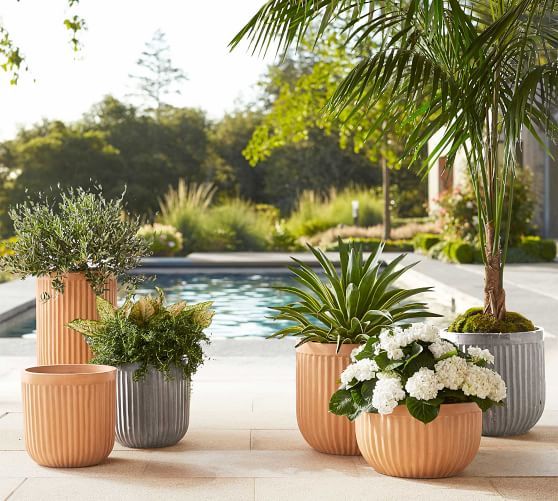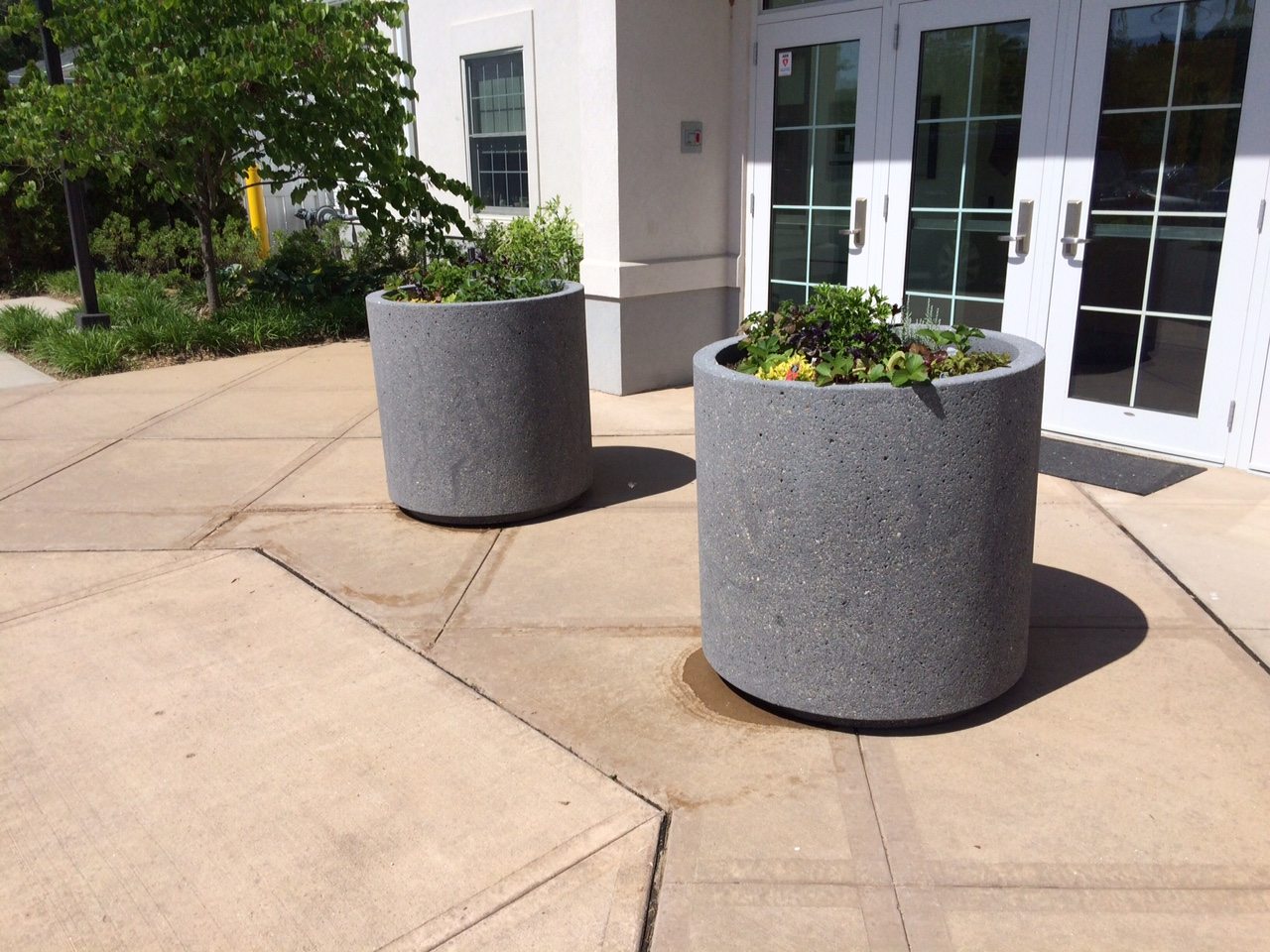Concrete planters are not just functional additions to your outdoor space; they can also serve as beautiful decorative elements. Whether you’re a gardening enthusiast or just looking to enhance your home’s curb appeal, installing a concrete planter can be a rewarding project. However, timing is crucial to ensure the success of your endeavor. In this article, we’ll explore the best time to install a concrete planter, taking into consideration various factors such as weather, plant selection, and personal preferences.
Table of Contents
- Choosing the Right Season
- Factors affecting season choice
- Pros and cons of each season
- Preparing Your Site
- Site selection and preparation tips
- Measuring and planning your concrete planter
- Selecting the Ideal Plants
- Plants that thrive in different seasons
- Matching plant choice with your planter’s season
- DIY vs. Pre-made Concrete Planters
- Benefits and drawbacks of DIY projects
- Convenience of pre-made options
- Dealing with Concrete Planter Molds
- Tips for creating custom molds
- Buying pre-made molds
- Exploring Modern Concrete Planter Designs
- Contemporary design ideas
- Incorporating aesthetics into your planter
- Choosing the Right Size
- Factors influencing size selection
- Balancing size with available space
- Maintenance for Longevity
- Tips for preserving your concrete planter
- Seasonal care routines
- Adding Decorative Elements
- Personalizing your planter
- Enhancing curb appeal
- The Appeal of Lightweight Concrete Planters
- Benefits and usage scenarios
- Avoiding common misconceptions
- Versatile Concrete Planter Boxes
- Multiple uses for planter boxes
- Customization and placement options
- Small Concrete Planters for Urban Gardens
- Space-saving solutions
- Growing herbs and small plants
- Concrete Garden Pots vs. Planting in the Ground
- Comparing container gardening and traditional gardening
- Advantages of using garden pots
- Custom Concrete Planters for Unique Spaces
- Tailoring your planter to your needs
- Collaborating with artisans
- Square Concrete Planters for a Classic Look
- Benefits of square-shaped planters
- Pairing them with different plants
Now, let’s delve into the article content, exploring each of these topics in detail.

Choosing the Right Season
The timing of your concrete planter installation depends largely on the season. Each season offers unique advantages and challenges for your gardening project.
Spring
Spring is a popular time to install concrete planters. The mild temperatures and increased sunlight create favorable conditions for plant growth. However, keep in mind that late frosts can still occur in some regions.
Summer
Summer is ideal for those who want to enjoy their outdoor spaces immediately. The warm weather allows for rapid plant growth and blooming. Just be prepared for more frequent watering during hot spells.
Fall
Fall is a great time for planting perennials in your concrete planter. The soil is still warm, promoting root development, and the milder weather is easier on newly planted flowers and shrubs.
Winter
While winter may not seem like the best time for planting, it can work for cold-tolerant plants. Consider installing concrete planters indoors or in sheltered areas to protect against frost.
Preparing Your Site
Before installing your concrete planter, careful site preparation is essential.
Site Selection and Preparation Tips
Choose a location that receives the right amount of sunlight for your selected plants. Ensure proper drainage to prevent waterlogging.
Measuring and Planning Your Concrete Planter
Take accurate measurements of your space and plan the size and shape of your planter accordingly.
Selecting the Ideal Plants
Your choice of plants should align with the season in which you’re installing your concrete planter.
Plants That Thrive in Different Seasons
Discover which plants flourish in spring, summer, fall, or winter.
Matching Plant Choice with Your Planter’s Season
Combine plants that complement the season and create a harmonious display.
DIY vs. Pre-made Concrete Planters
Decide whether you want to embark on a DIY project or opt for pre-made concrete planters.
Benefits and Drawbacks of DIY Projects
Customization and cost savings vs. time and effort considerations.
Convenience of Pre-made Options
Explore the wide range of pre-made concrete planters available in stores.

Dealing with Concrete Planter Molds
Creating custom molds or using pre-made ones can significantly impact your planter’s design.
Tips for Creating Custom Molds
Personalize your planter by crafting your own unique mold.
Buying Pre-made Molds
Discover the convenience of ready-made molds for quicker installations.
Exploring Modern Concrete Planter Designs
Modern designs can elevate the aesthetics of your outdoor space.
Contemporary Design Ideas
Get inspired by modern and minimalist planter designs.
Incorporating Aesthetics into Your Planter
Consider how your planter can complement your overall outdoor decor.
Choosing the Right Size
The size of your concrete planter is a crucial decision.
Factors Influencing Size Selection
Consider factors like plant root space, available area, and aesthetics.
Balancing Size with Available Space
Ensure your planter fits comfortably in your chosen location.
Maintenance for Longevity
Proper maintenance is key to ensuring your concrete planter stands the test of time.
Tips for Preserving Your Concrete Planter
Protect your planter from weathering and cracking.
Seasonal Care Routines
Learn about seasonal maintenance tasks to keep your planter looking its best.

Adding Decorative Elements
Personalize your concrete planter to enhance its visual appeal.
Personalizing Your Planter
Add your unique touch with paint, patterns, or decorative accessories.
Enhancing Curb Appeal
Boost your home’s exterior appearance with well-designed planters.
The Appeal of Lightweight Concrete Planters
Lightweight options offer flexibility in placement and design.
Benefits and Usage Scenarios
Explore the advantages of lightweight concrete planters.
Avoiding Common Misconceptions
Address common myths about lightweight planters.
Versatile Concrete Planter Boxes
Planter boxes offer versatility and a touch of style to your garden.
Multiple Uses for Planter Boxes
Beyond planting, discover creative uses for planter boxes.
Customization and Placement Options
Adapt planter boxes to your specific needs and preferences.
Small Concrete Planters for Urban Gardens
Urban dwellers can enjoy gardening with space-saving solutions.
Space-saving Solutions
Learn how small planters can thrive in limited spaces.
Growing Herbs and Small Plants
Utilize small planters for herbs and compact plant varieties.
Concrete Garden Pots vs. Planting in the Ground
Compare the benefits of using garden pots versus planting directly in the ground.
Comparing Container Gardening and Traditional Gardening
Understand the key distinctions between the two methods.
Advantages of Using Garden Pots
Discover why garden pots are a practical choice for many gardeners.
Custom Concrete Planters for Unique Spaces
Tailor your concrete planter to your specific needs and preferences.
Tailoring Your Planter to Your Needs
Consider customizing your planter for specific plants or spaces.
Collaborating with Artisans
Engage with artisans to create one-of-a-kind concrete planters.
Square Concrete Planters for a Classic Look
Square-shaped planters offer timeless appeal and design possibilities.
Benefits of Square-shaped Planters
Explore why square planters are a popular choice.
Pairing Them with Different Plants
Find out how square planters can complement various plant varieties.

Overview
The best time to install a concrete planter depends on various factors, including the season, your plant selection, and your personal preferences. By carefully considering these factors and following the guidelines outlined in this article, you can ensure a successful and visually appealing concrete planter installation.
FAQs
Q1: Can I install a concrete planter in the winter?
A: While it’s possible, it’s best to choose cold-tolerant plants and consider indoor or sheltered installations to protect against frost.
Q2: What are some lightweight concrete planter options?
A: Lightweight concrete planters are available in various materials, such as fiberglass-reinforced concrete and hypertufa.
Q3: How can I add decorative elements to my concrete planter?
A: You can personalize your planter with paint, stencils, mosaic tiles, or by choosing a decorative design when creating your mold.
Q4: Are square concrete planters suitable for all plant types?
A: Square planters can accommodate a wide range of plants, but it’s essential to consider the root space required for your specific plant choices.
Q5: What’s the advantage of using garden pots over planting directly in the ground?
A: Garden pots offer more control over soil quality, better drainage, and the ability to move plants to different locations as needed.
With this comprehensive guide, you’ll be well-equipped to plan and execute your concrete planter project successfully, no matter the season or style you prefer. Happy gardening!
